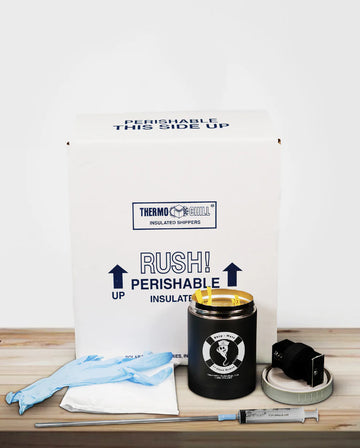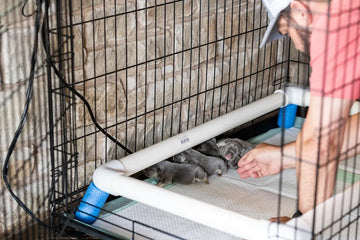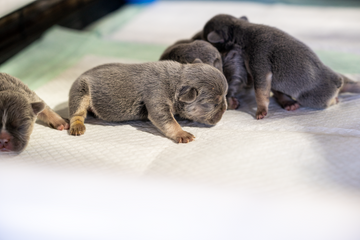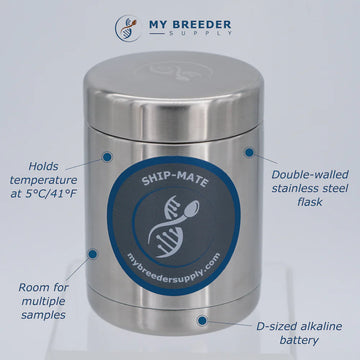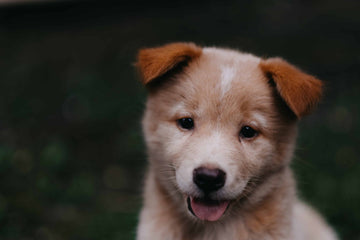
Introduction to Whelping Kits
As a dog breeder, one of the most important responsibilities you have is ensuring the health and safety of the mother and her puppies during the birthing process. Whelping kits are essential tools for breeders to help them navigate this critical period. In this article, we'll explore why whelping kits are so important, what they should contain, and how to use them effectively.
Why a Whelping Kit is Essential

A whelping kit contains all the necessary supplies and tools to assist the mother dog during labor and after the birth of her puppies. Being prepared with a well-stocked whelping kit helps breeders handle emergencies, prevent complications, and create a comfortable environment for the mother and her newborn pups.
Components of a Whelping Kit
Basic Supplies
These are items that you'll need for a smooth whelping process:
Whelping box: A safe and secure area for the mother to give birth and care for her puppies.
- Heating pad: To provide warmth to newborn puppies.
- Puppy scale: To monitor the puppies' weight and growth.
- Puppy collars: To identify and track individual puppies.
- Record-keeping materials: To document important information about the puppies' health and development.
Medical Supplies
These supplies can help you address any medical issues that may arise:
- Sterile gloves: For handling the puppies and assisting the mother.
- Hemostats: To clamp the umbilical cords.
- Scissors: To cut the umbilical cords.
- Iodine: To disinfect the puppies' navels.
- Bulb syringe: To clear the puppies' airways.
- Thermometer: To monitor the mother's temperature.
Sanitation and Cleaning Supplies
Maintaining a clean environment is crucial for the health of the mother and her puppies:
- Puppy pads: To absorb any messes and make cleanup easier.
- Trash bags: To dispose of soiled pads and other waste.
- Paper towels: For quick cleanups and drying puppies.
- Disinfectant: To sanitize surfaces and prevent the spread of infection.
Comfort Supplies
These items will help keep the mother and her puppies comfortable during and after the whelping process:
- Blankets: To provide warmth and comfort.
- Towels: To dry and clean the puppies after birth.
- Food and water dishes: To ensure the mother has easy access to nourishment.
- Puppy formula and bottles: In case the mother cannot nurse her puppies or needs supplemental feeding.
Setting Up the Whelping Box

Choose a quiet, draft-free area for the whelping box, and make sure it's large enough for the mother to comfortably move around and nurse her puppies. Line the box with puppy pads or newspapers for easy cleanup, and place a heating pad under a portion of the box to keep the puppies warm.
Gathering Supplies
Assemble all the necessary supplies from the whelping kit and have them readily available. It's also a good idea to have a list of emergency contacts, including your veterinarian's phone number, in case any complications arise during the birth process.
Creating a Comfortable Environment
In addition to setting up the whelping box, it's essential to create a calm and relaxed atmosphere for the mother. Dim the lights, minimize noise and keep other pets and people away from the area during the birth process. Make sure the mother has access to fresh water and food nearby.
Caring for the Mother and Puppies Post-Birth
Monitoring Health
Keep a close eye on the mother and her puppies to ensure their health and well-being. Check the mother's temperature regularly, and watch for signs of infection or complications. Monitor the puppies' weight and development, and consult your veterinarian if you notice any issues.
Feeding and Nutrition
Ensure the mother has a high-quality, nutrient-dense diet to support her milk production and overall health. If necessary, provide supplemental feeding to the puppies using puppy formula and bottles.
Cleaning and Sanitation
Maintain a clean environment by regularly changing the puppy pads or newspapers and cleaning the whelping box with a safe disinfectant. Wash bedding, towels, and any other reusable items as needed to keep the area clean and free of infection.
Whelping kits are an essential part of responsible dog breeding. Being prepared with a comprehensive kit can make the birthing process safer and more comfortable for both the mother and her puppies. With the right supplies and knowledge, you can confidently navigate the whelping process and help ensure the health and well-being of your canine family.
Whelping Kit FAQs
1. How do I know when my dog is about to give birth?
Some signs that your dog is about to give birth include nesting behavior, a drop in body temperature, loss of appetite, and restlessness.
2. How long does the whelping process typically take?
The whelping process can vary, but it usually takes between 6 and 12 hours. If your dog has been in labor for more than 24 hours, consult your veterinarian.
3. When should I intervene during the birthing process?
You should intervene if the mother seems to be in distress, if a puppy appears to be stuck, or if more than two hours have passed between puppies.
4. How soon should the puppies start nursing?
Puppies should ideally begin nursing within their first hour of life. This helps them receive essential nutrients and antibodies from their mother's milk.
5. When do puppies open their eyes and begin to walk?
Puppies typically open their eyes between 10 and 14 days after birth, and they begin to walk around 3 weeks of age.

